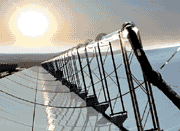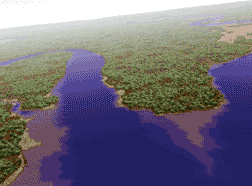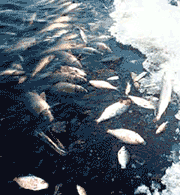|
|
 |
||||||||||
|
|||||||||||
|
|||||||||||
Way DownstreamIn Annapolis, the Maryland League of Conservation Voters is applauding green victories in the just-ended General Assembly. The Clean Cars Act sped through early on, adopting California standards to reduce pollution from cars, take a step away from global warming and cut back on our use of oil. The Promoting Solar Energy Act will Disappointments include the failed Green Fund bill, the Global Solutions Act and a Program Open Space loophole. In all, the League credits Maryland voters for a winning session. “What a difference an election can make,” says executive director Cynthia Schwartz … If people are to care about the health of the Chesapeake Bay, they first have to appreciate and enjoy it. That’s the idea behind the Chesapeake Bay Gateways Network, which promotes and supports 156 public and private parks, museums and wildlife refuges throughout the Bay’s watershed from New York to Virginia. Maryland’s U.S. Senators Benjamin Cardin and Barbara Mikulski are directing $739,000 from the National Park Find your gateway at www.baygateways.net … In Western Maryland, the sweet sounds of dam-busting soon will fill the air. Officials there say they hope to begin removing a 10-foot-high, 220-foot-long dam on the North Branch of the Potomac River this summer, the Associated Press reports. The dam disrupts water flows, prevents fish from traveling upstream and forces canoeists into laborious portages …
Our Creature Feature comes from the Shenandoah River in Virginia, where biologists are proceeding with what has become a grim rite of spring there: Investigating what is killing fish. It began in 2004, and sure enough, again this year in late March, small-mouth bass and red-breasted sunfish, anglers’ favorites, began floating to the surface. So did several dozen suckers. It’s a consequential investigation: the Shenandoah flows into the Potomac, which flows into Chesapeake Bay. It’s unknown thus far what form of pollution killed them, but the early sleuthing points to what one expert referred to as “an entire fish population” under stress … |
|||||||||||
|
|||||||||||
|
|
|||||||||||
|
© COPYRIGHT 2007 by New Bay Enterprises, Inc. All rights reserved.
|
|||||||||||
 increases our state’s use of sun power. The Stormwater Management Act requires developers to use environmental site-design to manage stormwater.
increases our state’s use of sun power. The Stormwater Management Act requires developers to use environmental site-design to manage stormwater. Service to the Network this year. Some will be spent bringing to reality the 3,000 miles of the Captain John Smith Chesapeake National Historic Trail, the nation’s first water trail.
Service to the Network this year. Some will be spent bringing to reality the 3,000 miles of the Captain John Smith Chesapeake National Historic Trail, the nation’s first water trail.